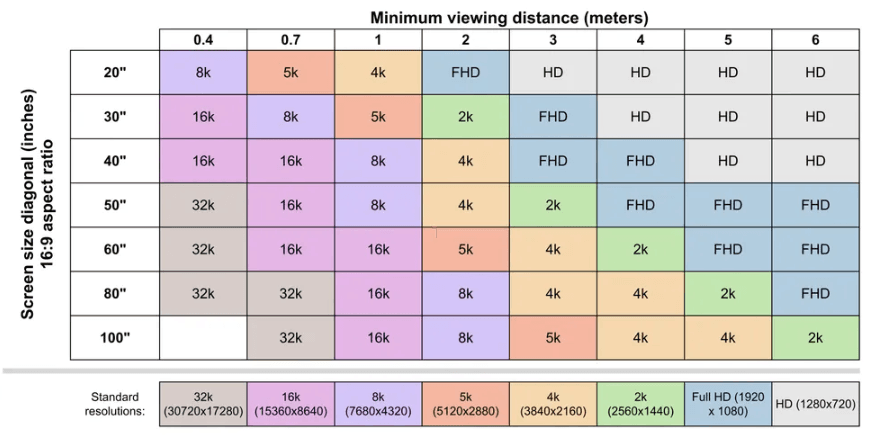
Researchers at Cambridge University have published the results of a new study that looks into how humans perceive display pixel density, and they came out with some surprising findings. The average human has a much higher sensitivity than previously thought, adding credence to the argument that individuals would be able to perceive more detail on an 8K monitor than one with only half the resolution.
Previously, it was thought that people would be unlikely to benefit from using an 8K monitor over one with 4K resolution, because it was believed that the human eye cannot register the enhanced detail it provides. But the study throws cold water on that theory.
According to the researchers, who's findings were first discussed by Tom's Hardware, they observed that humans can, on average, perceive up to 89 pixels per degree, which is a measurement that also factors into their distance from the screen. Earlier studies had found that individuals could only perceive up to around 60 pixels per degree, so it’s a fairly significant finding.
To help us understand how this applies to real world settings, the researchers produced a special table that allows us to calculate the limitations of human perception at various screen sizes and distances.
As an example, if someone has a 50-inch TV and sits three metres away from the screen, their perception will be limited to around 1440p. So that means if you swapped out that 1440p display for one with higher resolution, the viewer is unlikely to be able to recognise any difference between the two. As such, a 4K resolution TV would not deliver a better image quality from the viewer’s perspective, and neither would one with 8K resolution.

From a three-metre distance, you’ll need a TV of 60-inches or bigger to perceive the actual benefit of 4K resolution. And if you want a 5K TV, you’ll need at least a 100-inch display. Alternatively, if you insist on having a 50-inch 4K TV, you’ll need to sit no more than two metres away to enjoy the benefit. For an 8K resolution model of the same size, you’ll have to sit just one metre away.
But monitors are different from TVs, because they’re designed to be viewed at much closer distances. If we use a viewing distance of 40 centimetres and have a monitor of between 30- and 40-inches, you can go all the way up to 16K resolution and still see more detail than you would on an 8K model. In fact, even a 32K resolution display might be worthwhile if you go beyond 60-inches.
That suggests 8K monitors, which are still pretty rare things, do provide real benefits for gamers and professionals such as designers, as they’ll provide much more detailed images than a 4K resolution model. In other words, something like the Acer Predator Z57, which boasts a 57-inch 8K panel, really can make sense for some people.
However, there’s an equally good argument that such intricate detail isn’t really necessary for most tasks you could perform on a monitor, especially when you’re paying a premium for it.
The findings do also have implications for televisions and virtual reality headsets, which are at opposite ends of the spectrum in terms of display size. For mega-sized TVs of 100-inches and larger, there’s potential to see increased benefits even beyond 8K resolution. Meanwhile, given that VR displays are almost touching our eyes, 16K would likely deliver a noticeable improvement in image detail.